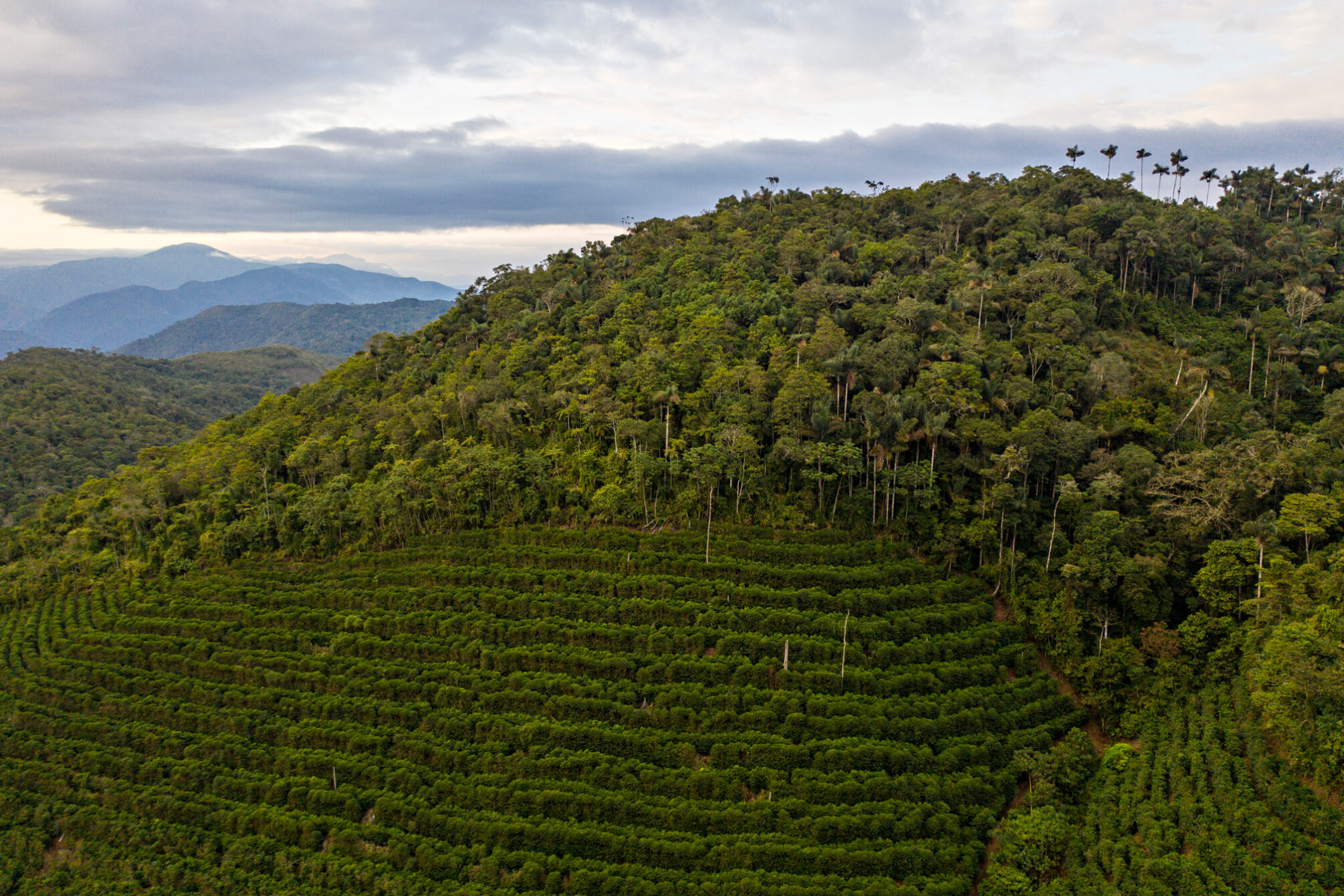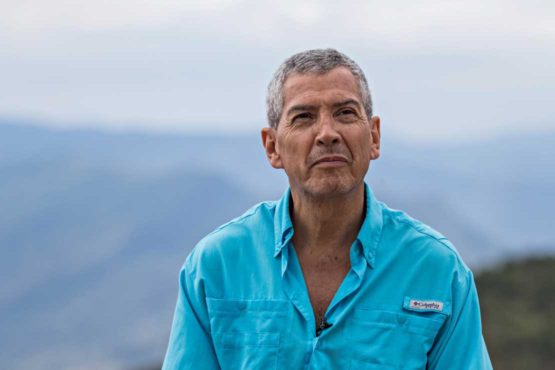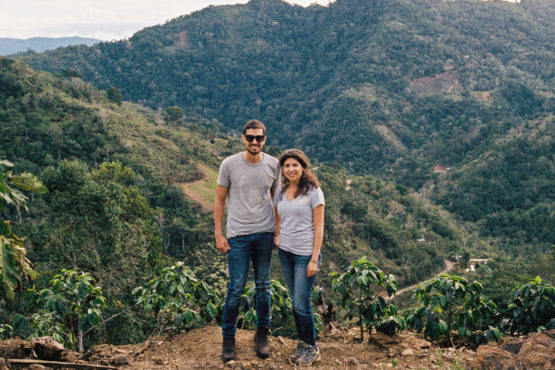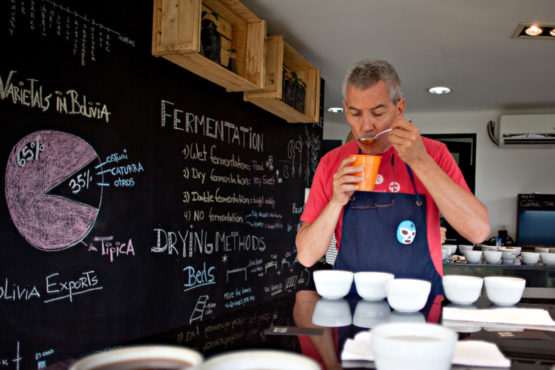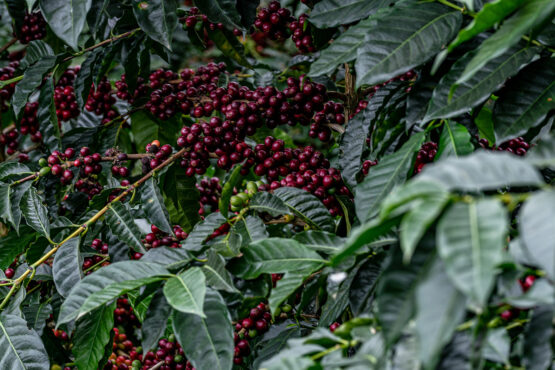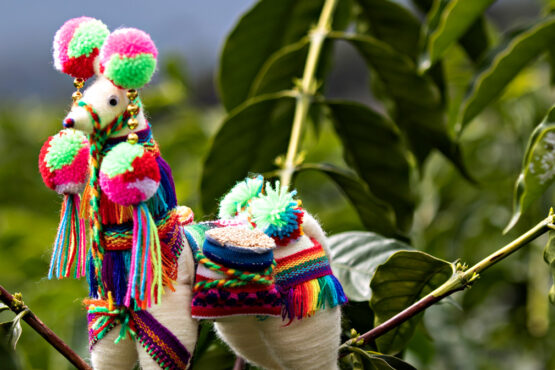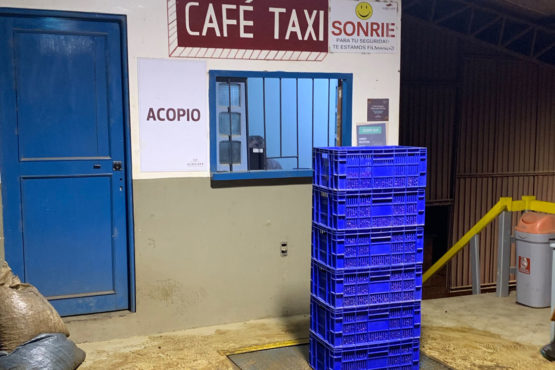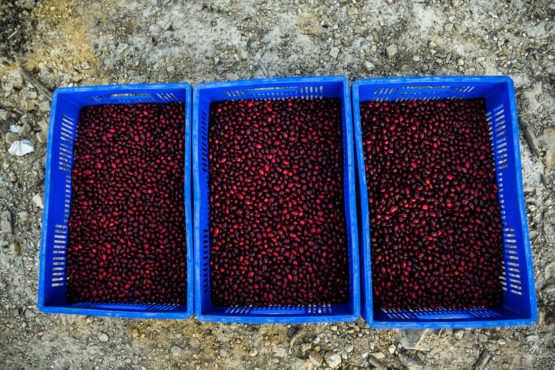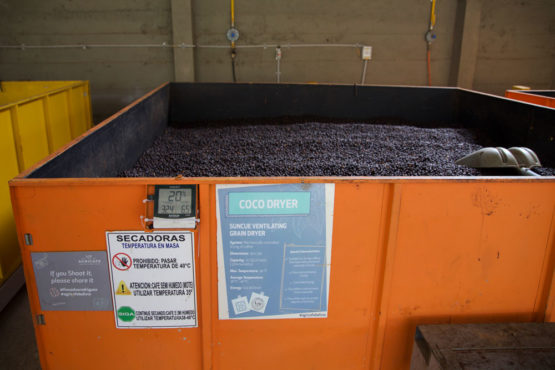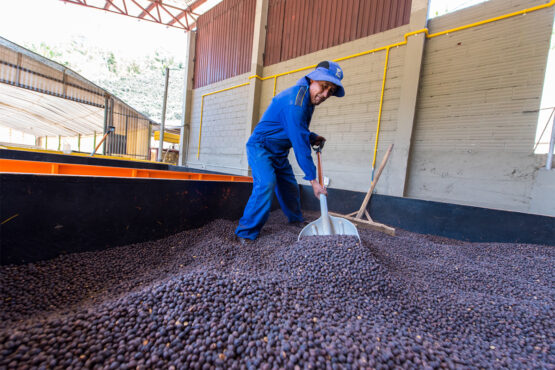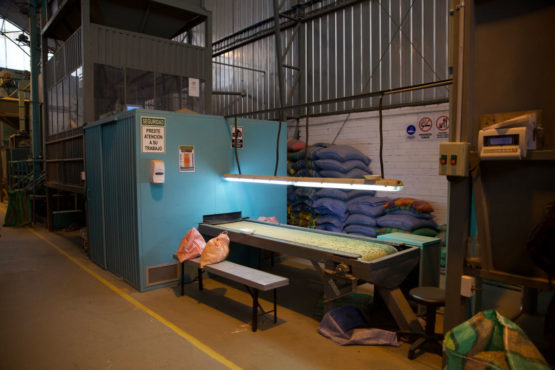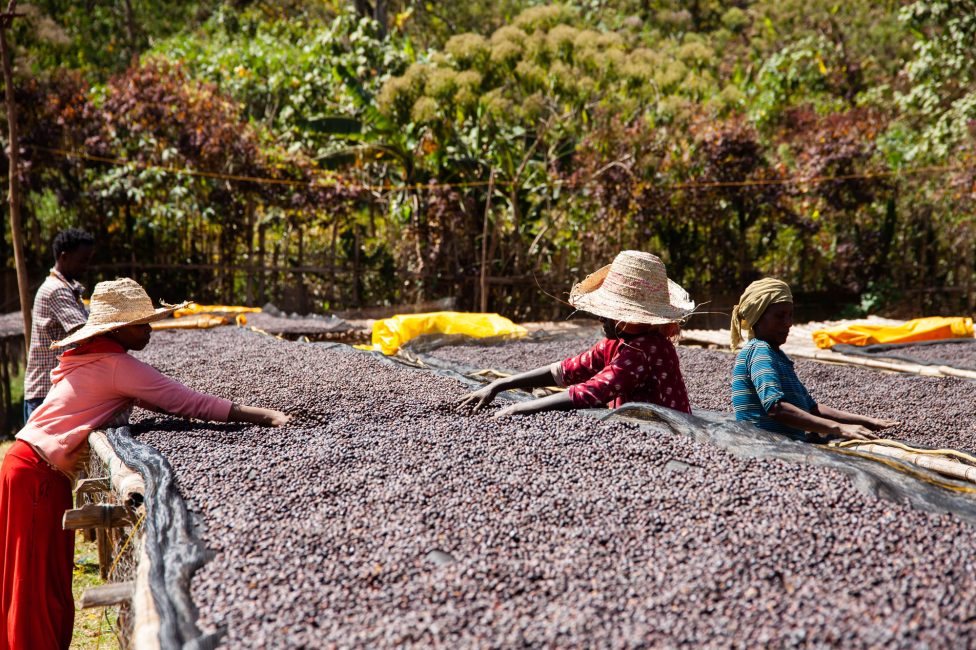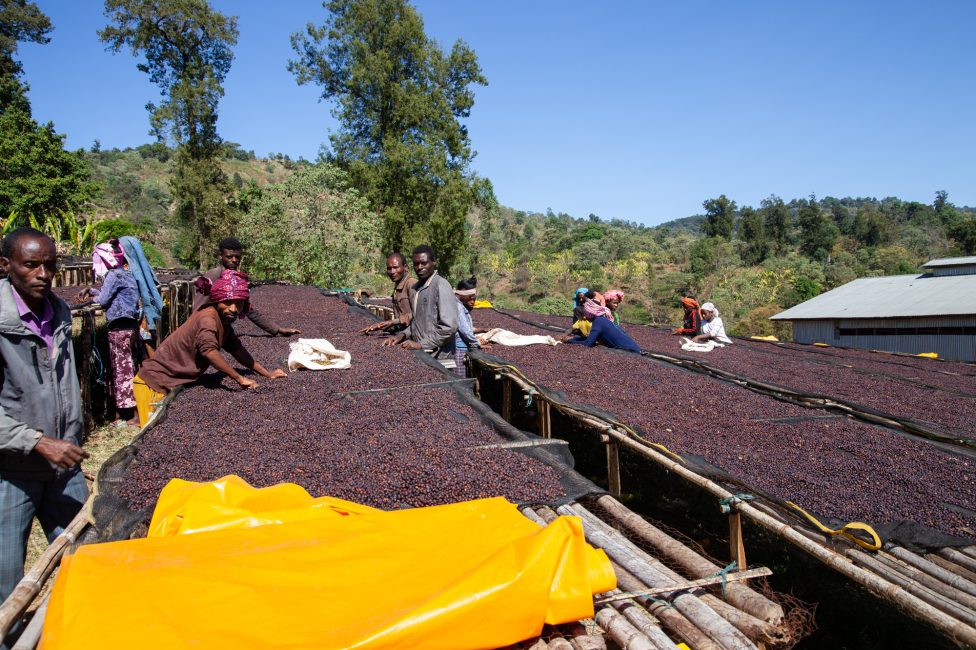La Llama
Great structure and clarity, with a silky mouthfeel and lingering sweetness. Nectarine, plum and red apple.
This 1,200kg lot comes from Finca La Llama, one of the latest additions to the Fincas Los Rodríguez farms. It has only been in harvest since 2017, and though its production is still small, it is of exceptional quality. The farm is located in the settlement of Villa Rosario, which lies in a lush, steep mountain valley just outside of the town of Caranavi. The farm is owned by the Pedro Rodríguez and his family, who also operate an exporting business called Agricafe.
La Llama is the highest of all of the Los Rodríguez farms, sitting at over 1,700m above sea level. At this high elevation, temperatures are mild during the day and stable at night. This helps ensure a slow maturation of the cherry, which leads to an increased concentration of sugars in the cherry and bean, producing a sweeter cup of coffee. Early in the morning or late afternoon, it is very common to find a mysterious fog covering the coffee plants, caused by the region’s unique microclimate.
La Llama is 9.58 hectares in size, 5.24 of which are under coffee. Reaching the highest point of the farm is an experience in itself – as you travel along the winding, steep roads in a four-wheel-drive you’ll pass very neat and perfectly spaced rows of coffee. Pedro has trialed several varieties on this farm, including Java, Gesha, Yellow Caturra, Sl28, SL34, Batian, and Ethiosar. This particular lot is 100% Yellow Caturra.
Pedro and his family have invested a lot of time and effort into trying to make each of their plantations a ‘model’ farm that other producers in the area can learn from. Their learnings have also been shared with local producers through a training program that the family has developed called Sol de la Mañana. Head here to learn more about this wonderful program, and here to learn more about the incredible work the Rodríguez family and Agricafe are doing in Bolivia.
HOW THIS COFFEE WAS PROCESSED
At La Llama, Pedro hires pickers from the Villa Rosario community to carefully handpick the coffee during the harvest. These pickers are trained to select only the very ripest cherries, and multiple passes are made through the farm throughout the harvest to ensure the coffee is picked at its prime. Selective picking is always very important and is particularly important for naturally processed lots like this one, to ensure a very sweet and clean cup. The Rodríguez family has found that the very ripest (almost purple) cherries provide the best cup.
After being inspected and weighed, the coffee was carefully sorted by weight using water, and floaters were removed. Following this, the coffee was placed a conveyor belt and was disinfected, in a similar process used for wine grapes. It was then depulped and placed in PVC tanks without water to ferment. After 72 hours, the coffee was carefully washed using fresh, clean water and placed inside one of Buena Vista’s ‘stationary box’ dryers for a total of 68 hours. These boxes are series of steel containers which use a gentle flow of warm air from below the coffee bed to dry the parchment slowly and evenly. Coffee was stirred manually every two hours to further ensure it dried at a uniform rate.
Once the coffee was dry, it was transported to La Paz where it was rested before being milled at Agricafe’s dry mill, La Luna. At this state-of-the-art mill, the coffee was first hulled and sorted using machinery, and then by a team of workers who meticulously sorted the coffee again (this time by hand) under UV and natural light. The mill is one of the cleanest and most impressive we have seen – you can read more about it here.
